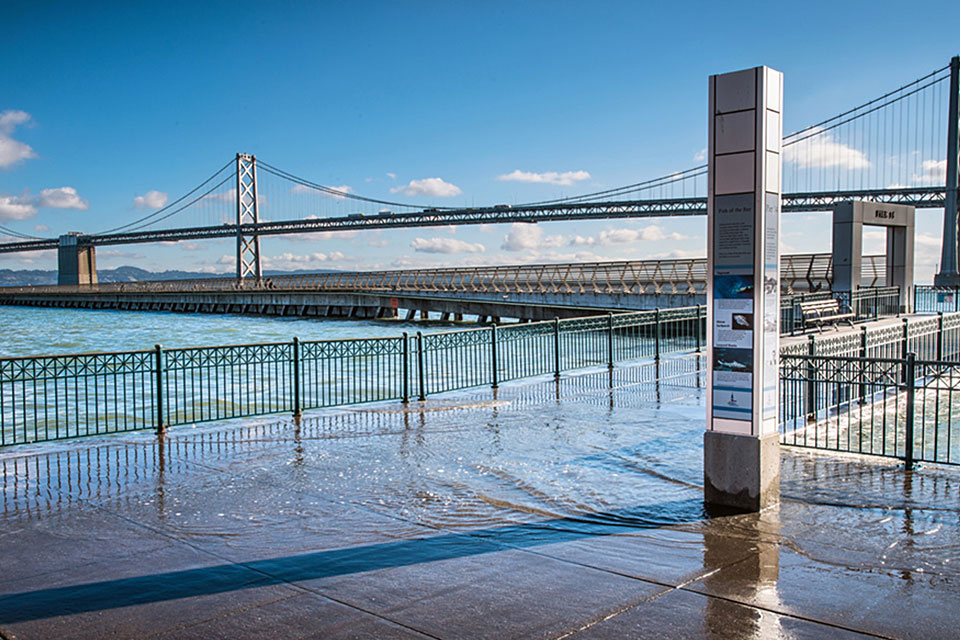How is sea level rise related to climate change?
A warming climate can cause seawater to expand and ice over land to melt, both of which can cause a rise in sea level.

Californians living on the coast may be used to seeing so-called King Tides — a regular phenomenon where high tides are higher than normal on certain days of the year. Shown here: Embarcadero Waterfront in San Francisco, California. Image credit: Michael Filippoff
Many people are interested in climate change and how a changing climate will affect the ocean. With the majority of Americans living in coastal states, rising water levels can have potentially large impacts. Global tidal records from 1900 to 1990 show an estimated four to five inch rise in global mean sea level. Then, in the 25 years from 1990 to 2015, this global tide gauge network showed global sea level rising three inches, agreeing with measures by satellite altimeters taken since 1992. Currently, sea level is rising about one-eighth of an inch per year but is projected to rise in the future. By 2100, sea levels may rise another one to eight feet.
Sea level can rise by two different mechanisms with respect to climate change. First, as the oceans warm due to an increasing global temperature, seawater expands—taking up more space in the ocean basin and causing a rise in water level. The second mechanism is the melting of ice over land, which then adds water to the ocean.
Global sea level trends and relative sea level trends are different measurements. Just as the surface of the Earth is not flat, the surface of the ocean is also not flat—in other words, the sea surface is not changing at the same rate globally. Sea level rise at specific locations may be more or less than the global average due to many local factors: subsidence, upstream flood control, erosion, regional ocean currents, variations in land height, and whether the land is still rebounding from the compressive weight of Ice Age glaciers.
Sea level is primarily measured using tide stations and satellite laser altimeters. Tide stations around the globe tell us what is happening at a local level—the height of the water as measured along the coast relative to a specific point on land. Satellite measurements provide us with the average height of the entire ocean. Taken together, these tools tell us how our ocean sea levels are changing over time.
Social